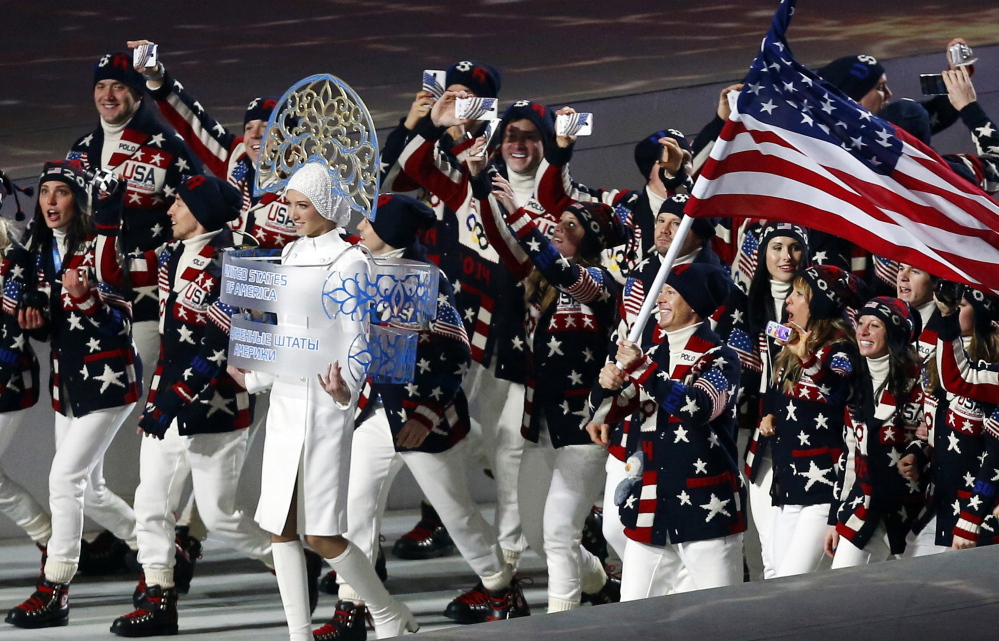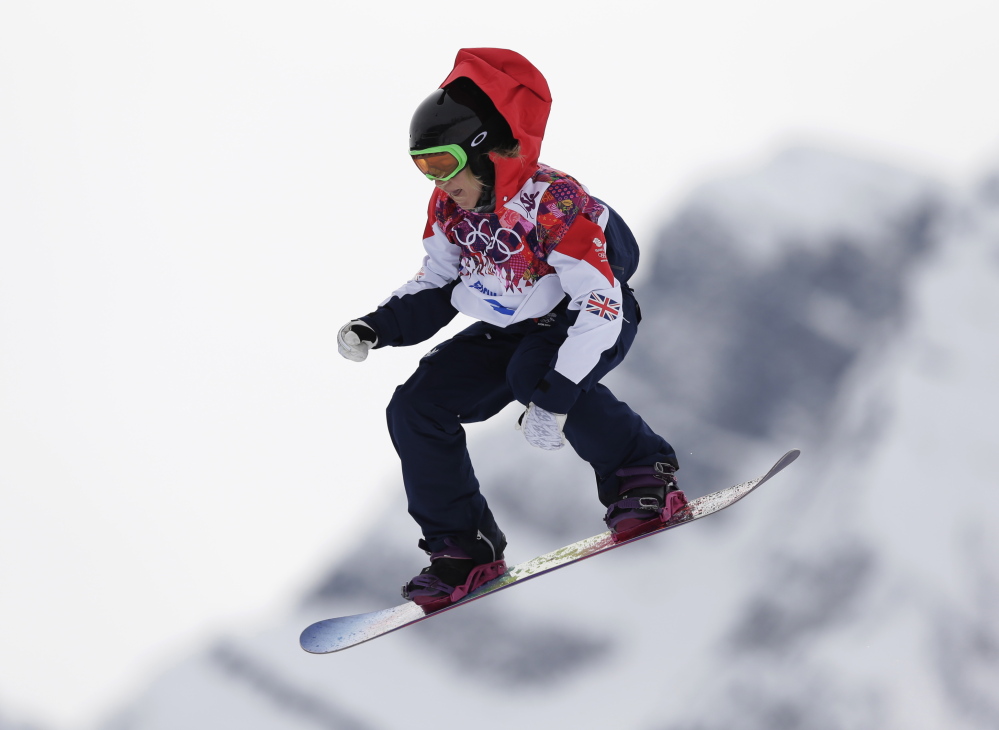SOCHI, Russia – When Jenny Jones won Olympic bronze at the Sochi Games, her following on Twitter exploded.
The audience for @jennyjonessnow has grown 10-fold, to 65,000 followers, in the three weeks since the British snowboarder tweeted: “Just found out I officially made the GB winter Olympic team. Whoop!”
Olympic success is also working wonders for @sagekotsenburg. The U.S. snowboarder’s account had 13,645 followers when he got the gold in slopestyle and tweeted: “WOW!! I just won the Olympics!!” That number grew to 14,196 in 30 minutes, 16,697 in an hour, 40,791 in 24 hours and to nearly 64,000 by Friday.
Vacuuming up followers on Twitter, Facebook and other social media platforms is the smart play for Olympians at the Sochi Games. Athletes who catch and ride the once-every-four-years wave of social media interest in all things Winter Olympics, sharing pictures, thoughts and stories from their privileged backstage access at the games, could come home from Russia with stronger hands to woo new sponsors or squeeze more money from existing ones.
“They only have one shot at getting in the zeitgeist,” says Walter Delph, CEO of Adly, which helps brands build buzz via social media movers and shakers. His advice to Olympians: “Grab the followers, grab the volume now because that is the best opportunity.”
It used to be that Olympians had only traditional media – newspapers, reporters and later radio and TV – to tell their stories and recount their feats. Although they are still required to brave thickets of microphones and gauntlets of reporters after competing, they also are increasingly cutting out the middle men and addressing global audiences directly in 140-characters or less.
Savvy Olympians, their sponsors and managers made sure they came to Sochi prepared not only to compete with each other on snow and ice but also in an arm-wrestle for social media attention and buzz. Being cool and engaging on Twitter and posting eye-catching photos on Instagram are becoming the 21st century equivalents of a 1,000-megawatt smile – practically a must-have. U.S. snowboarder Faye Gulini, for example, opened her Twitter account three weeks before flying to Sochi, prompted by the radio station she works with in Salt Lake City, her hometown.
“The more people that know who I am, the better off I am,” she says. “The more people that follow you on your social media, the more people know of you and then that opens up doors for sponsors and money and all that stuff.”
The three U.S. women ski jumpers who competed in Sochi were all “highly” encouraged in an 18-month lead-up to the games to develop their presence on Twitter, Facebook and Instagram. “It’s absolutely a must. You have to have it,” says Whitney Childers, communications director for Women’s Ski Jumping USA. “Our team sponsors require that.”
“We knew that as we got closer to the Olympics, people wanted to know more about them, they wanted to get to know them, they wanted to understand their story and the best way to do that now is to be in control of it yourself and that’s through social media, “ she said. “And they all did it, some more reluctantly than others.”
To avoid distractions and pressures from outside to perform, some Olympians unplugged for the games. The defending champion in women’s aerials skiing, Lydia Lassila, tweeted Jan. 31: “Time to sign off until after #Sochi2014.”
But forgoing the chance now to build on @LydiaLassila’s 2,800 followers may pay off later, the Australian’s manager, Bruce Kaider, argues. They plan something “engaging and interesting” – Kaider wouldn’t be specific, to preserve the “surprise” – on her platforms post-games, when social media channels aren’t as saturated with Olympic content as they are now.
“Everyone is trying to compete on who can do the coolest tweet, who can take the coolest photo,” he says. After the games close Feb. 23, “she will get some real clear air.”
What Olympians can and cannot tweet, like and share is also regulated by the International Olympic Committee. Its rules bar them from promoting “any brand, product or service on their social media pages, blogs or personal websites” during the games without prior, written Olympic approval.
But there does seem to be wiggle room. In Sochi, the account of figure skater Gracie Gold has retweeted tweets first posted by sponsors of the U.S. Olympic Committee. They must be thrilled, because @GraceEGold’s following has more than doubled – from 27,100 to 60,000 on Friday – since she marched with Team USA in the Feb. 7 opening ceremonies and won bronze in team skating.
While noting that she isn’t privy to the details of Gold’s deals with her sponsors, the USOC’s chief marketing officer, Lisa Baird, says by email that some athletes “are required to tweet on behalf of their sponsors” and others “do this on their own initiative (without contractual commitments) as they value their sponsor relationships highly.”
“When an athlete’s following explodes like Gracie’s has this Olympic Games, it definitely makes her a more valuable spokesperson for a brand,” Baird says.
Other Olympians insist they won’t sell out or just aren’t interested. Jones, whose slopestyle bronze was Britain’s first-ever medal on snow, said she was “really shocked” by the spike in her Twitter following and hasn’t thought about how she might exploit it financially.
Iouri Podladtchikov, the cool-cat snowboarder who ended superstar Shaun White’s gold-medal reign in halfpipe, lamented that “some of my biggest idols” turned him off with social media feeds that make “you feel like you’re in a never-ending advertising campaign.”
“I-Pod” isn’t a prolific tweeter, posting links to just three photos – of his medal, his winning run and the opening ceremony – since the games opened. He also retweeted a shout-out from fellow Swiss Roger Federer, whose 1.4 million Twitter folllowers makes the audiences for most winter Olympians look meager in comparison.
Without vigorous engagement, the following for @iouriamazing has grown only modestly to top 9,000 on Friday. I-Pod, a photography enthusiast, is doing better on Instagram, with more than 30,000 followers.
“I really don’t care if it’s 10,000 followers or 100,000,” he says. “I just want it to be me … even if it’s not selling.”
Send questions/comments to the editors.



